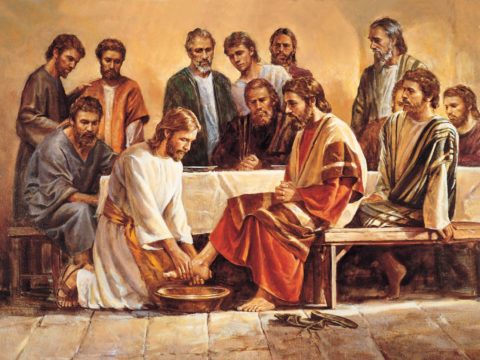I’ve been reading John Sorenson’s Mormon’s Codex, whose electronic version happily now includes the maps, added in an update a few days ago. It’s a monumental work with many treasures for students of the Book of Mormon. I was disappointed, however, when I read in an LDS forum that Dr. Sorenson had not taken Brant Gardner’s work into account, especially his new analysis on directions in Mesoamerica. Gardner’s work, including his presentation at a recent FAIRLDS Conference and his publication, “From the East to the West” at MormonInterpreter, helps us understand some of the complexities in Mesoamerican directions and understand why the Book of Mormon may require something other than our standard cardinal directions. Gardner gives us new perspectives showing that the Book of Mormon’s use of directions may even be comfortably at home in ancient Mesoamerica. I don’t think Sorenson would have had to change very much in his approach, but there was an opportunity to further strengthen some of the correspondences with Mesoamerica.
However, Dr. Sorenson understandably has just one lifetime to work with, and that has resulted in a need to miss some areas in order to cover the expanse that he has brought together for his work.
One of the areas where he has fruitfully considered the work of other LDS scholars involves ancient languages in Mesoamerica. I was pleased to see him discuss the work of Brian Stubbs, whose research into the Uto-Aztecan (UA) language group has revealed a very high level of apparent influence from Hebrew or other Semitic languages. One example of Stubbs’ work is in a publication for the Maxwell Institute. Here is an except from Sorenson’s book (see original for the table and the references):
Brian Stubbs, a recognized expert on the UA language family, later took up a parallel but linguistically more sophisticated comparison of Semitic languages, this time with UA; he was already familiar with tongues of both families. His 1988 report showed a “consistent pattern of sound correspondences” that involved over 200 roots. A brief sample of terms he found illustrates that at least some type of systematic relationship exists [see table 10.1 of Sorenson])….
This list has since been greatly expanded and shows several sorts of patterned linguistic correspondences between the two families in addition to vocabulary. In 1996 Stubbs reported, “The similarities (lexical, morphological, and semantic combinations) between UA and Semitic [now] number about 1000.” 23 By 2005 (personal communication) that number had grown greater still, yet Stubbs considered his latest informally published study 24 still exploratory. Now that he has published a major comparative work on UA languages (based on 2,700 cognate sets drawn from 30 UA tongues), 25 he plans to return to a comparison of Semitic with UA. Stubbs’s intermediate conclusion is that perhaps 30–35 percent of all UA words relate in some degree to Semitic languages. 26
In a forthcoming book he plans to demonstrate that a variety of puzzles in the UA data are explainable by supposing the infusion of two Semitic dialects and Egyptian that creolized with an ancestral UA base tongue. 27 “A salient implication suggested by the data is that Egyptian and two dialects of Northwest Semitic and other unknowns, likely of American origin, had merged by Proto-Uto-Aztecan times. Such is admittedly a strange combination, but many languages are strange combinations—like English. Modern English kept only 15 percent of the Old English vocabulary, . . . having replaced most of the other 85 percent with influxes of Latin and French. . . . Many languages are mixtures to varying degrees.” 28 The Hebrew-language element was apparently incorporated into the developing Uto-Aztecan family between 2,000 and 3,000 years ago. (Compare table 10.1.)
Data on this scale and with the linguistic sophistication Stubbs brings to it are sufficient to require serious consideration of the hypothesis that UA languages involved a significant Semitic element.











"…may require something other than our standard cardinal directions"
Exactly who's "standard cardinal directions" are you referring to? Church G.A has never taken a position on any of this.
Until there are official statements from G.A. regarding BOM geography, it is presumptuous to define anything concerning this topic as "Standard" or "Cardinal" and should instead be qualified as speculative opinion.
"The word of the Lord or the translation of other ancient records is required to clear up many points now so obscure." -George Q. Cannon
This is fascinating, Jeff.
Anonymous, fwiw, I think you have misunderstood what Jeff meant in using that phrase. I read it as simply how we tend as modern people to use directional terms when describing locations.
Papa D,
If I misunderstood his meaning I accept that.
Phrases like "Mormon's Codex" and "the proper setting" are authoritative, yet presumptuous when Church leadership remains silent on the issue.
It's disingenuous when inquiring about uncomfortable topics I'm told to "put it on the shelf" because the The Church has no official answer, but then be presented with yet another comprehensive study of BOM geography when the same lack of Church authority exists.
Its a new and a awesome matter and i am curious about this language.in this sense it is really great.I am waiting further information from you.keep it up man !!!!!!
About the post above. Hoping for honest discussion about a sincere matter that I and possibly many others who dare to ask find troubling. Oh well
When I see some names from Latin America there are some that are similiar to what is in the Book of Mormon. I hope someday more proof can be found.
For Jeff Lindsay: have you heard of the "tha alibi of Persia"? If so (I know it is not translated in English) do you know what the text consists of or speaks of? I read that it mentions or talks about something the Book of Mormon talks about -something to do with Joseph. Just wondering and wanting a more clear explanation.
JG